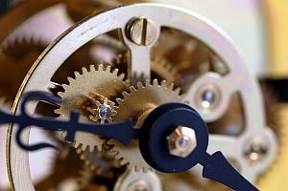 A biomechanical chain—sometimes called the "kinematic chain" or "kinetic chain"—is a simple idea about a complex system. You already know that the hip bone is connected to the thigh bone, the thigh bone is connected to the leg bone, the leg bone is connected to the ankle bone, and the ankle bone is connected to the foot bone. Someone could even write a song about this—and it seems they already have. This interconnectedness is the basis of how our bodies work, and it's about more than merely the bones that make up our skeleton. This biomechanical chain includes our muscles, tendons, ligaments, blood vessels, glands, nerves and much more. The important thing to understand about the biomechanical chain is that if one link is broken, it will likely affect others in an adverse manner. The human body is brilliantly designed to compensate for these types of problems, but this compensation usually comes with a price as other parts of the body absorb additional or unusual stresses. For example, structural weakness, misalignment or asymmetries in the feet can trigger changes further up the body, particularly in the ankles, knees, hips, back and neck.
There is a similar cause-and-effect relationship that can begin with just a single misaligned vertebra in the back. Resulting pain may cause the person to favor one leg over the other while walking, resulting in further distortion of the posture and greater misalignment, resulting in even more problems and pain. The study of mechanics concerns itself with how matter reacts to forces, which can involve pressure and/or motion. We see this when someone uses a simple lever and fulcrum to lift a heavy object. Biomechanics merely takes these same simple principles and applies them to the body. The field of biomechanics includes both static (body at rest and in balance) and dynamic (body in motion) aspects. By studying the structure of the body and the forces involved in staying at rest or being in motion, scientists, doctors and physical therapists can better understand sources of injury and teach improved ways to perform repetitive or even competitive actions. Greater understanding of the biomechanical chain can help improve sports performance, functional training, and strength and conditioning. It can also help with injury management, rehabilitation and even injury prevention. Poor biomechanics can lead to a range of musculoskeletal problems. When the body has to overcompensate for poor biomechanics, it has to work harder to produce the same effect. This leads to greater fatigue and pain. Even something as simple and seemingly low-stress as sitting at a computer desk can result in tension, stiffness and possible spasms in one or both arms, for example. Your chiropractor is an expert at spotting structural problems in the biomechanical chain and can advise you about the best options for treatment. Regular chiropractic adjustments and close attention to the health and well-being of your body’s musculoskeletal system can help keep your biomechanical chain in good working order.
0 Comments
Leave a Reply. |
AuthorPosted by Dr. Babak Missaghi Archives
August 2017
Categories
All
|

 RSS Feed
RSS Feed
